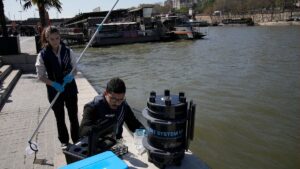Published on
•Updated
EU member states diluted water rules — enabling up to ten times more chemical pollution arising from medicines to be permitted in groundwater compared with an original European Commission proposal — when the institutions finalised an update to the Water Framework Directive on Tuesday.
Member states also downgraded a proposal to set a broad cap on the amount of pharmaceuticals acceptable in groundwater, narrowing the rules to cover specific substances and leaving others unregulated.
The 2000 Water Framework Directive of groundwater, rivers and lakes, provides for supervision and monitoring of the ecology and chemical health of water.
A 2025 implementation report found only 39.5% of surface waters, rivers, lakes and coastal waters to be in “good ecological status”, and about 26.8% are in “good chemical status”.
For the Danish EU Council presidency, Environment Minister Magnus Heunicke, it was crucial to strike the right balance between ensuring effective protection of the aquatic environment without imposing unnecessary burdens on the EU countries or hindering activities critical to society.
MEP Hildegard Bentele (Belgium), the European People’s Party (EPP) group’s lead negotiator on the file, said the outcome was a responsible and pragmatic package to improve water quality in the EU.
“These regulations protect water quality without overregulation – with scientific integrity at the centre. We have focused on the most harmful substances and avoided unnecessary burdens, always based on the latest scientific findings,” said Bentele.
Lawmaker Mihal Wiezik (Slovakia/Renew Europe) said the law was flawed: “If action is not taken now, the costs of restoring the quality status of water will be astronomic when compared to preventive measures,” he told reporters.
“This progress [agreement after three years of negotiations] is severely undermined by the excessive timelines member states gave themselves to limit pollution in EU waters. This weakens the Water Framework Directive’s potential as a tool for prevention,” said Sara Johansson, senior policy officer to water pollution at the European Environmental Bureau (EEB).
The agreement reached by the EU co-legislators will now need to be rubber-stamped by the European Parliament before being fully adopted and entering into force.
Read the full article here



